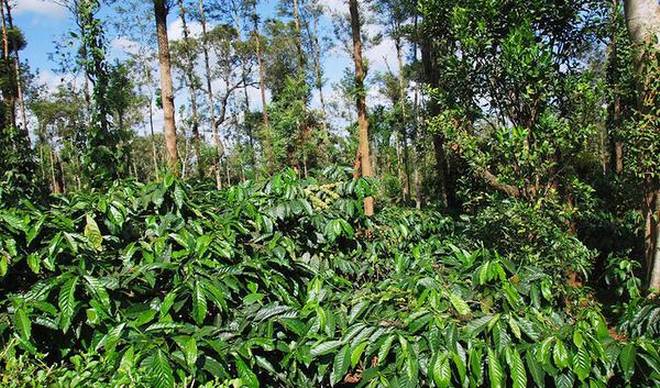
Using silver oaks is detrimental for robusta
The exotic silver oak may be coffee growers’ preferred shade tree now, but research shows that it affects carbon sequestration and tree diversity in Kodagu’s agroforest systems.
Kodagu’s coffee farms were created when farmers cleared forest undergrowth and started growing coffee under the shade of giant evergreen trees. This ‘native shade’ coffee is still prevalent in the district, but evergreen trees are quickly losing out to the fast-growing silver oak. Farmers do not need permission from forest officials to lop or cut silver oak; this also contributes to its popularity. However, old forest trees make up a huge portion of carbon stocks here, and carbon stocks matter because the higher the carbon contained in vegetation, the more it helps with mitigating climate change.
Carbon stocks
To find out if carbon stocks change when silver oak takes over, a team including scientist Manjunatha Munishamappa from Bengaluru’s Environmental Management and Policy Research Institute studied a total of 49 native and exotic agroforestry systems – where either robusta (which needs more sunlight) or arabica coffee varieties are grown – near 18 forest patches that fall under both moderate and high rainfall zones. In each plot (all spread across 22 locations along the Cauvery river in Kodagu), the researchers quantified shade tree species diversity and the amount of organic carbon sequestered in the trees by measuring wood, root, litter and soil biomass. Across all plots, the researchers identified a total of 86 native tree species; and the total carbon stocks rose with increasing tree diversity.
Native trees in coffee estates and forests displayed high and comparable carbon stocks (approximately 193 and 222 megagrams (Mg) of carbon (C) per hectare respectively) as well as tree diversity (around 45 tree species). However, the introduction of silver oak negatively impacted both carbon stock and diversity. Predictably, robusta coffee estates with silver oaks had significantly lower tree diversity (nine species) and lower carbon stocks (up to an average of 65 MgC per hectare) than all other land-use systems in both precipitation zones.
Current trends
Hence, the current trend of replacing native shade trees in coffee estates with silver oaks is detrimental for carbon storage and tree diversity, especially in robusta farms. Current policies do play a role in this change, because the exotics can be cut for timber without prior permission.
“We have submitted two reports to the Karnataka government on these findings, we hope some policy changes will be incorporated,” he said.
source: http://www.thehindu.com / The Hindu / Home> Science / by Aathira Perinchery/ October 20th, 2018

